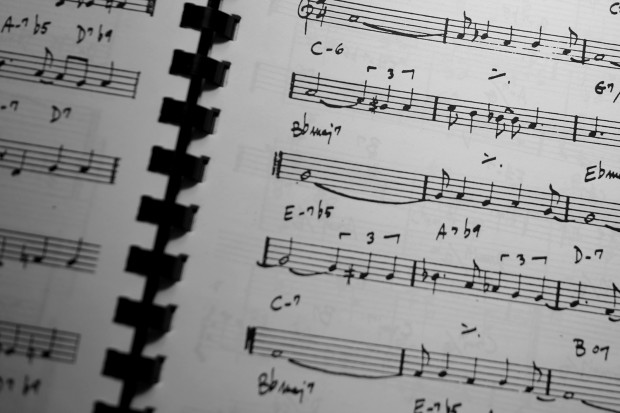The Lightbulb Moment: Learn Lots of Songs

Here I am, once again, on the bandstand with a bass in hand. Two sets down, one to go. It’s a free for all… no official set list and a handful of requests.
A guy with a twenty in his hand walks up to the stage and says, “Do ya’ll know ‘Whipping Post’?”
The guitar player immediately looks at me and my eyes turn upward, desperately searching the top floors of my mental vault to remember a song that I’ve never officially learned. I’ve certainly heard the song plenty of times, but do I know it? At this point, it doesn’t matter… we give it a go anyway.
I wish I could say this didn’t happen a lot, but that would be a lie. It happens all of the time. There are thousands of songs in the universe, wait, no. There are thousands of songs in my music library. There are millions, if not billions, of songs in the universe. It’s humanly impossible to know them all and yet I give it the old college try. Sometimes I do happen to know the requested song and I pleasantly surprise both the bandleader and myself. Other times I find myself stumped and the song gets added to the giant set list in the sky (aka, the note pad on my iPhone).
That list of “songs to know” keeps growing and growing, and unfortunately, I don’t often have an opportunity to work on it. Instead, I find myself working on songs that I’ll have to perform on Friday night. Sometimes they’re original songs for an artist showcase, other times they are cover songs to learn for a wedding gig. Lucky for me, the master set lists often overlap. The songs I should learn become the songs I have to learn and lo and behold, I’m held accountable for them.
Learning songs isn’t just about saving face on the bandstand, it’s about making you a well-rounded player. There’s a lot of music out there and it’s up to you to discover it. If you’re a non-gigging musician, you may be scrolling through and wondering why you’re wasting your time reading this. Well, here’s why! Learning a song forces you to:
- Learn about chord progressions/harmonic movement and develop your aural comprehension skills (ear training)
- Play in different keys
- Dissect great bass lines
- Discover and understand a particular bass player’s style
- Recognize musical form (ie: intro, verse, chorus or AAB)
- Implement technique
- Practice playing “in time” and in different meters
- And, dare I say most importantly, develop your musical intuition
Just in case you don’t believe me, let’s take a look at a song and break things down one by one. How about, oh, “Whipping Post” by the Allman Brothers? If you’ve never heard this song, get ready for a musical expedition that, if you opt to listen to a live version, may involve a significant investment in time and/or narcotics. Ready? Here goes…
Overall, this song is a great study in A minor. While the main riff and verse stay mostly on A, the changes move to the “four” chord (D) and the “five” (E); an opposite take on the traditional blues “five-four.”
This song isn’t just “in the key of A minor,” it truly explores the key. Try learning some of the fills note for note and you’ll find that you need to move all over the neck. If you typically stay to the “box” around the 5th-7th fret, this is a great way to make yourself jump around more. If you’re in the mood to transpose, try playing these lines in other keys.
This song features a few bass “themes.” First, the high-energy groove from A-G (one to flat seven). The verse and jam section, rooted in a back-and-forth octave groove, truly takes you on a listening journey. The intricate fills, chromatic lines, and scale-based runs prove this to be a difficult tune to learn note-for-note. It contains plenty of musical gems that are well worth the time to figure out.
Berry Oakley. A bass player easily certified as a “monster” that was unfortunately taken too soon. Few players get the opportunity to stretch out in such a creative way. A particularly energetic player, he moves around the neck with a “have no fear” attitude that results in a style all his own. If you decide to listen to a more current version of the song, you may have the pleasure of listening to Oteil Burbridge, another low-end master.
This song features a few “formulaic” approaches as the introduction and first verse follow a specific number of bars. That said, it is most known for its extended jam section—intense, raging storms of swirling guitars are followed by calm breezes and musical call-and-response.
If you ever needed a reason to work on your left hand technique, the opening riff will give you something to practice. It takes quite a bit of discipline and flexibility to play this song; the octaves jumps prove challenging as well. If you need to give your plucking hand a work out, take the authentic Oakley approach and play it with a pick.
Again, this song will certainly test your endurance and timing. If you’re not able to play it at the original tempo, try practicing those riffs a bit slower and work up to playing along with the record. Also, make a note of the opening riff. Hint: it’s not in 4/4.
While there’s no real way to teach “jamming,” listening to a band like the Allman Brothers will likely inspire you to call up some buddies or go to an open jam session. Listen to how the band transitions from section to section… ultimately, you want to inherently feel those changes in momentum. You’ll follow the rest of the band and learn when it’s time to play with more force, when to hold back, and hopefully, how to end the song. Knowing how to move with the ebb and flow of the music is intuitive, but like anything, needs to be developed.
So there you have it, the short version, that is. “Whipping Post” provides an incredible amount of musical know-how, and while it is a long-winded example, you can walk away with a lot of knowledge from this one song. Just think… what if you learned ten songs? A hundred? A thousand? You get my drift. There are so many ways to spend your practice time, and while playing through the modes with a metronome is all well and good, please don’t discredit the theory “learn lots of songs.” Now that I’ve spent plenty of time listening and writing about “Whipping Post,” it’s time for me to pick up a bass, get the song under my fingers, and cross it off the list.
Ryan Madora is a professional bass player, author, and educator living in Nashville, TN. In addition to touring and session work, she teaches private lessons and masterclasses to students of all levels. Visit her website to learn more!




opening riff in 11/8 !
good song, great bass line, I had fun learning it. Thanks for the article.
1+ in my set list.
I have been working on Whipping Post and the walk was stumping me because it isn’t quite in A minor like I thought. I ran it by a friend who said to try to play A dorian, which is odd for me as I have put in zero time on modes. That said, it worked. Playing the notes of G but starting on the A (2 octaves worth with a chromatic walk from the F# to A on the 2nd octave). Am I wrong in saying the song is in A dorian?